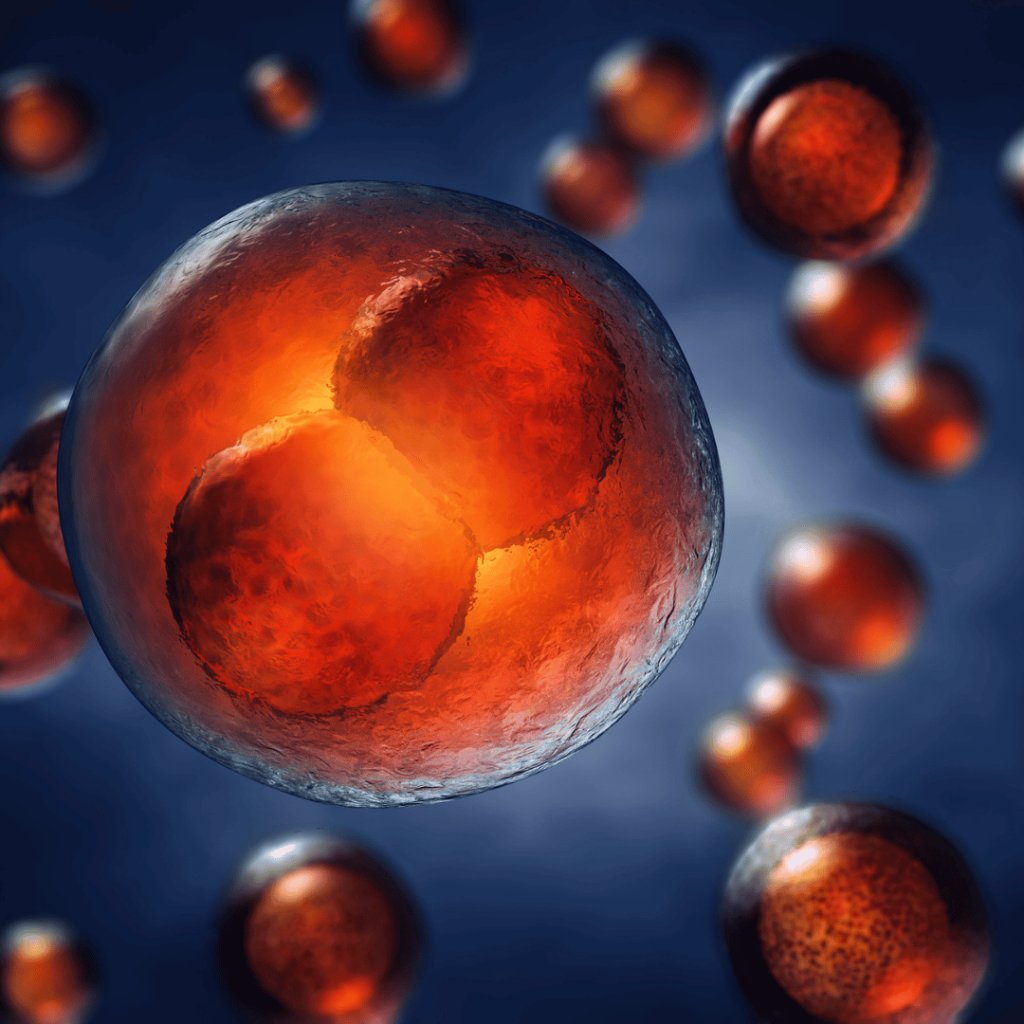Since the first successful frozen embryo transfer (FET) in the 1980s, improvements to freezing and thawing techniques have revolutionised the IVF field. The most recent data published by the HFEA (Human Fertilisation and Embryology Authority) in the UK show that there has been a 41% increase in FET-IVF cycles between 2017 and 2021, while fresh embryo transfers fell by 8% during the same period. Birth rates with frozen embryos have also skyrocketed, leaping from just 6% in the 1990s to 27% in 2021.
How does a fresh IVF cycle differ from frozen?
The lead up to embryo transfer during a fresh cycle is much more lengthy and complicated. You need to take a regimen of hormones to stimulate your ovaries into producing a greater number of eggs. These eggs are then retrieved when mature enough and viable oocytes are fertilised with sperm in the lab. The most promising embryo will then be transferred to the uterus either on day 3, or more usually on day 5 when it has reached the blastocyst stage.
Any remaining embryos can then be frozen on day 5 or 6 for later use. With a frozen cycle, the best-quality embryo is thawed and transferred to the uterus. The stages of ovarian stimulation and egg retrieval are bypassed and this means the process is fast (the procedure takes around 20 minutes) and much less mentally and physically demanding.
Advances in embryo freezing
The process of cryopreservation has been greatly improved with the introduction of vitrification (flash freezing), which prevents the formation of ice crystals which damage the cells of the embryo. Under these conditions, embryos can be stored indefinitely and many women are now opting for freeze-all cycles where all embryos are frozen.
Modern thawing techniques mean that currently around 95% of embryos survive the procedure. This cutting-edge technology is now standard in most fertility clinics.
So why use fresh embryos?
When it comes to using donated eggs, FET is highly recommended due to the need for synchronization. Planning for FET after the creation of embryos is a stress-free process and can be tailored to your menstrual cycle. The primary benefit is that you can get pregnant faster, as the embryo is usually transferred 5 days after egg retrieval. With FET, you have to wait 6 to 8 weeks, as a recovery time of one full menstrual cycle is needed after egg retrieval and transfer needs to be coordinated with the following menstrual period.
Also, fresh embryos appear to implant quicker. A fresh embryo usually takes one or two days to hatch (break out of its protective outer membrane in order to implant in the endometrium), whereas a frozen embryo can take up to 5 days to hatch. Fresh transfer also spares you the cost of an additional trip to the clinic, which needs to be factored in when considering FET abroad. As mentioned above, although the risk of cryodamage during embryo freezing and thawing is minimal, for some patients this is not a risk worth taking.
Benefits of FET
Good success rates: Thanks to advances in the field, FET now has comparable or even better live-birth rates than fresh embryo transfer. This is most notable in women with PCOS who are more susceptible to OHSS (ovarian hyperstimulation syndrome), or women with advanced endometriosis. Also, a study by Stanford University showed that women with high progesterone levels during egg retrieval benefit from freezing their embryos and waiting for hormone levels to fall to improve the chances of implantation.
In these instances, the evidence showing the advantages of FET over fresh is compelling. It's important to note that FET is not necessarily a cheaper option. The process of stimulating the ovaries with medications is similar for both fresh and FET cycles. The main difference is in the timing of preparing the uterus for the transfer. In fact, for international patients, FET can be more expensive, as they may incur additional expenses when traveling for subsequent visits.
Preserve fertility: It is common knowledge that women are starting their families later in life and egg or embryo freezing before the age of 35 is an excellent way to ensure that even if you are considered of advanced maternal age, your embryos won’t be!
The age at which a woman decides to use her frozen embryos has far less impact on success than the age of her eggs (or the donor’s eggs) and subsequent embryos. Medical conditions such as cancer can also affect fertility, so embryo freezing before undergoing chemotherapy provides these patients with the opportunity to start a family after their treatment has finished.
Convenience: As frozen embryos can be stored for years, you can choose to get pregnant when it suits you. This also allows you to plan your ideal spacing between siblings. If you are using donor eggs, FET is highly recommended as there is no need to coordinate with the donor in order to synchronise menstrual cycles so egg retrieval and transfer can be done in tandem. In a fresh cycle, if the donor drops out or doesn’t respond to ovarian stimulation; or if the recipient’s uterus isn’t ready for embryo transfer, the IVF cycle is cancelled.
Enables genetic screening: PGT (pre-implantation genetic testing) involves taking a biopsy of the embryo, which is then sent to a lab for analysis. Results can take time (often more than 2 weeks), so the embryo needs to be frozen in the meantime.
PGT allows the embryologist to select only chromosomally normal embryos for transfer, which in turn leads to better pregnancy rates and lowers the risk of miscarriage.
As you can see, there are pros and cons to consider when weighing up which transfer is best for you, but the mantra ‘fresh is best’ no longer holds true. It seems the pendulum is now swinging firmly in the direction of FET.
Get in touch with our fertility experts to discuss your IVF options


